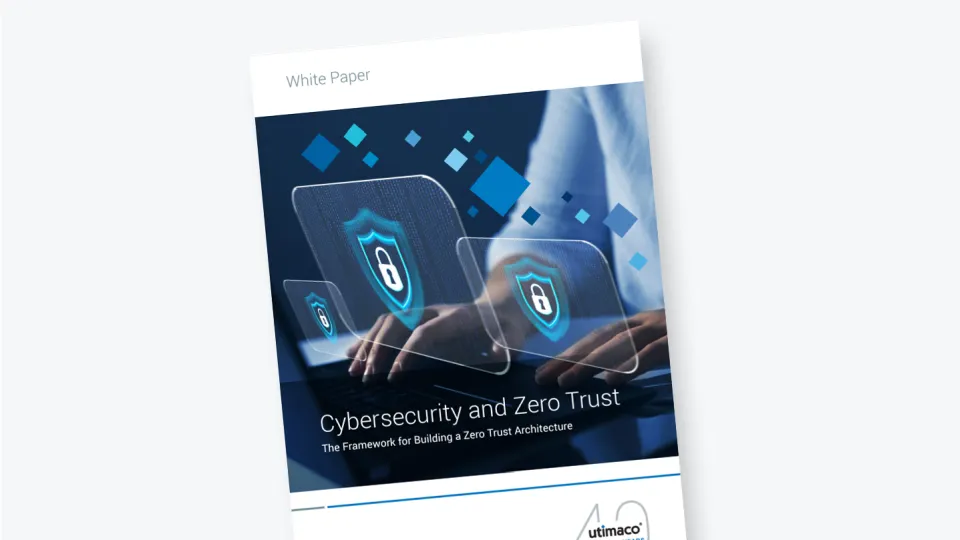The Framework for Building a Zero Trust Architecture
This white paper provides in-depth insight into the importance of following a Zero Trust approach - a critical requirement for building up any organization’s IT security infrastructure.
Take a closer look at:
The core security principles of Zero Trust: In-depth information on the what, how, and why a Zero Trust Architecture is essential - beginning with building a solid foundation and adhering to particular principles and security measures
Start building a Zero Trust Architecture. Where to start? Here you’ll find insight into the basics and the benefits of considering a Zero Trust approach.
Identity management - the core of the Zero Trust model. What is the role of identity management in Zero Trust and why are humans the weakest category of identity?
Authentication in Zero Trust: Why authentication is a critical challenge and what tools are required. Learn more on how to authenticate the right users and authorize the appropriate access permissions
Data Encryption and access management to minimize attack impact.
The role of cryptography in Zero Trust: Why cryptography plays an important role in cybersecurity. How cryptography lies within the core of modern products, technologies and services, and how it provides a mechanism for strong authentication and data encryption.
The importance of cryptographic keys and how key generation, management, and storage are critical requirements.
Learn more about Utimaco’s solutions for implementing a true Zero Trust Architecture and how Hardware Security Modules (HSMs) provide you with the tools to build up a Zero Trust Architecture.
General Purpose Hardware Security Modules as Root of Trust for Zero Trust Architecture
Strong security at each layer of an organization’s IT infrastructure is of importance to avoid threats and attacks at every possible entry point. A Zero Trust Architecture (ZTA) framework addresses this exact requirement and is a key enabler for mitigating the risk of unauthorized access.
Throughout all use cases in each industry, the number of connected identities, devices, applications, software, and data is expanding. This provides huge advantages for remote access and management, yet it also increases the likelihood of both internal and external threats.
In comparison to other security approaches, ZTA eliminates implicit trust as it is not built upon implied trust zones. It is based on the general principle of “never trust, always verify” and requires continuous validation of every stage of a digital transaction.
A properly built ZTA requires that all and any users, devices, and applications, as well as any additional infrastructure components both inside and outside of an organization's network, to continuously be authenticated, authorized, and validated before accessing systems and data. The secure generation and storage of cryptographic keys with a Hardware Security Module (HSM) is the starting point for each reliable ZTA.
Using Hardware Security Modules as the central Root of Trust for your Zero Trust Architecture
Cryptographic keys are needed to secure all actions to protect digital data, information, and processes, such as file encryption or identity and access management. Hence, reliable, and secure generation and storage of these keys should be the foundation for the complete security of any digital environment.
General Purpose HSMs provide secure generation, storage, and usage of cryptographic keys to protect those keys against loss, disclosure, manipulation, and misuse.
Hardware Security Modules enable total security for Zero Trust Architectures
Based on their core capabilities, which are secure generation, processing, and storage of cryptographic keys, HSMs provide many advantages in comparison to other key generation and storage methods including:
- Generation of high-quality keys by using strong cryptographic algorithms and randomization
- High logical security for key access, for example by m out of n authentication mechanisms
- High physical security since the HSM is fixed-installed in a rack, and specific HSM models can also detect physical attempts to be broken
- HSMs are the most proven and secure method for cryptographic use cases and are available from a wide range of performance and certification variants, ensuring that they meet an organization’s specific requirements.
Download our white paper about "Cybersecurity and Zero Trust" below and find out more about how to build and secure your individual Zero Trust Architecture.







